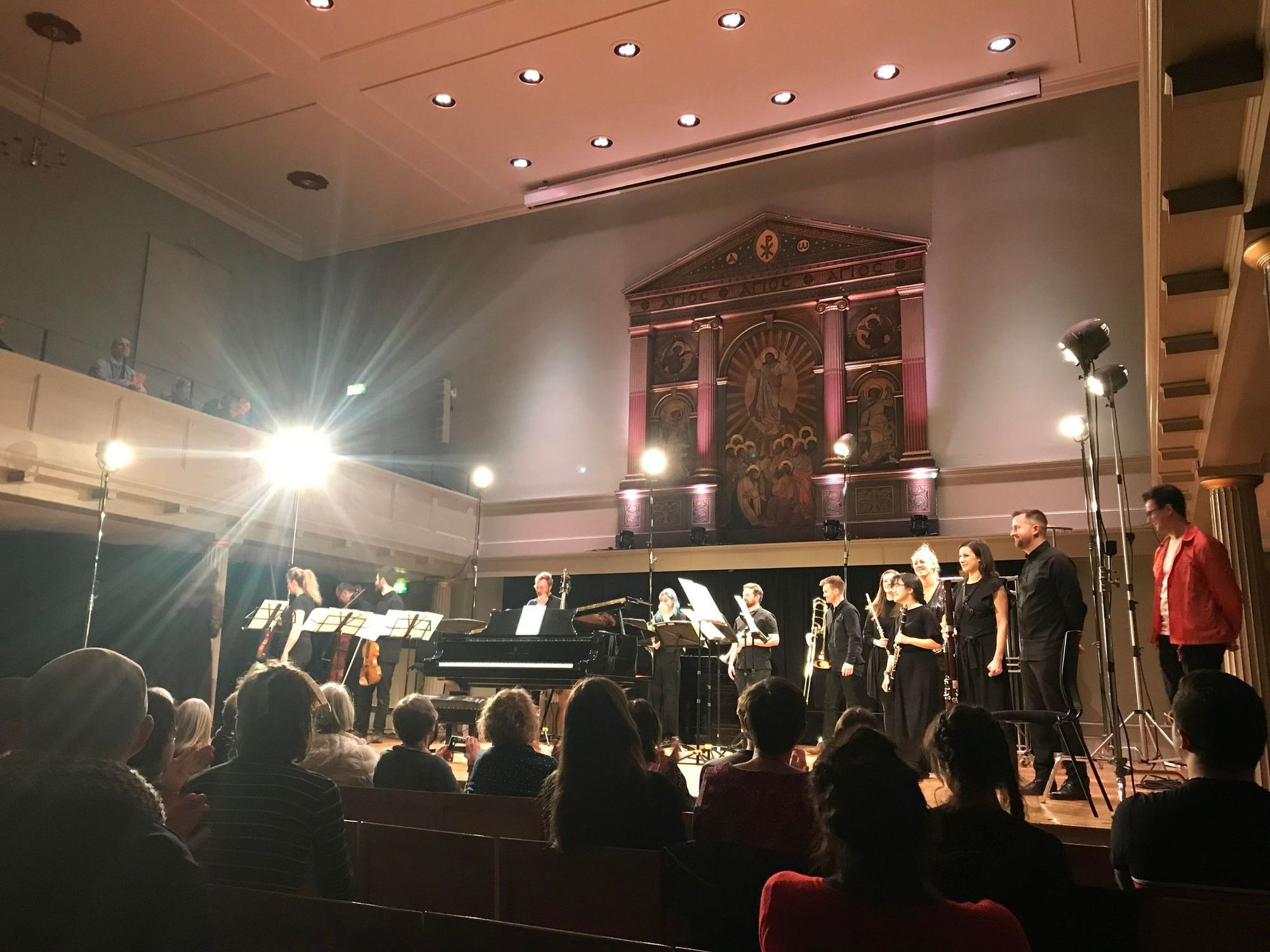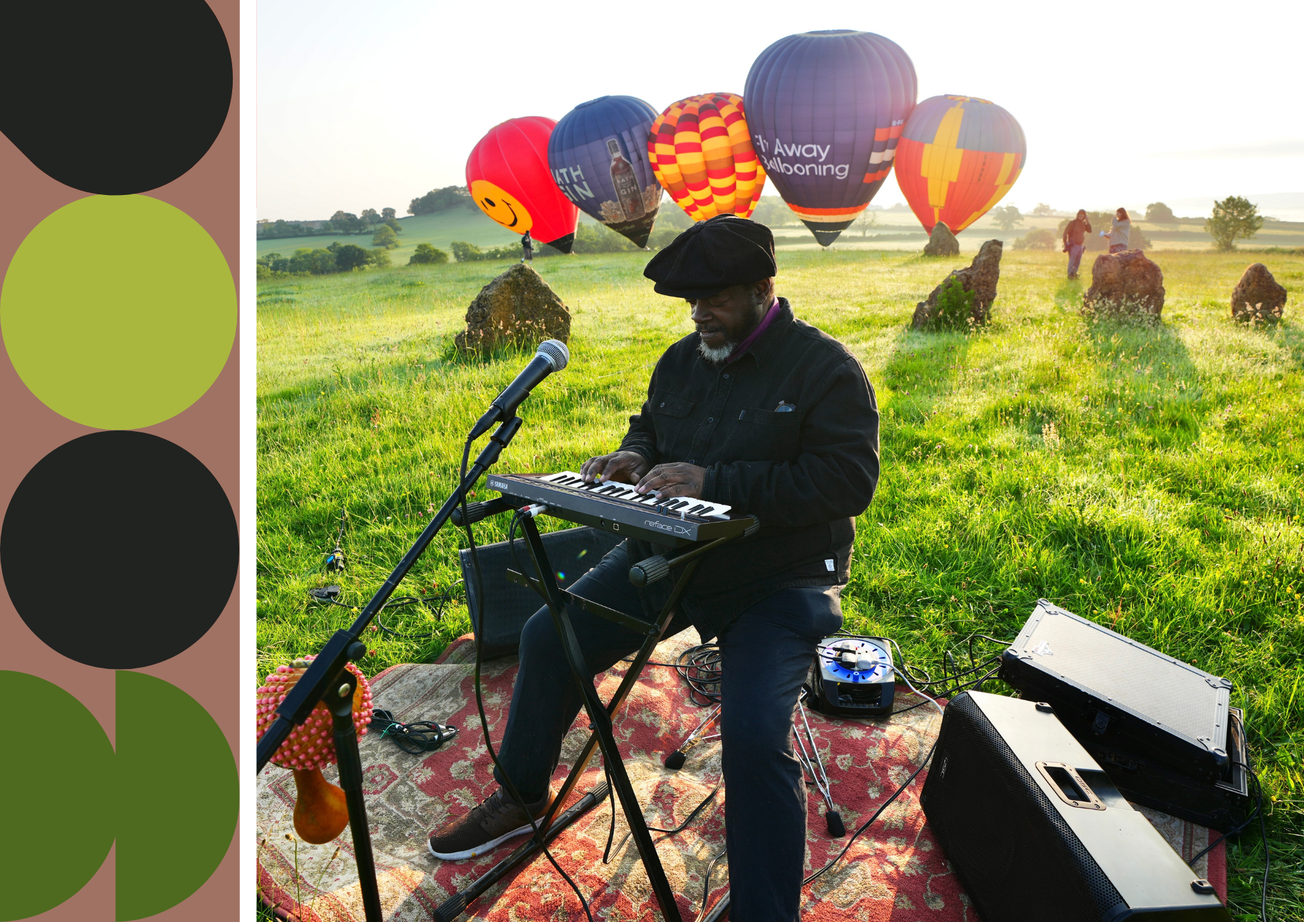By Takashi Kitano, MSc Social and Cultural Theory
On the same date of their debut 5 years ago, Manchester Collective displayed an enthralling collection of opuses to conjure up 'A Little Requiem' at St. George's.
Manchester Collective is a fresh art organization whose motto is to create radical human experiences via diverse forms of music. After 5 years of expanding their artistic and geographical reach, their appearance in Bristol was the premier of a two-day venue tour, met with 500 spectators. This occasion was devoted to the theme of ‘A Little Requiem’ – an incessant obsession with endings. The evening was made even more fascinating for the audience with the space-themed venue of the grand hall at St George’s Bristol, which was converted from a 200-year-old church.
In part of his opening speech, Chief Executive Adam Szabo illustrated the special arrangement of instruments. A single piano was set in the centre, the pianist with their back to the audience. The chamber orchestra line-ups were arranged in a circle around the piano acording to the basic formation – an arrangement designed to create perfect harmony inside the family of instruments.
Coming soon — our first chamber orchestra programme this season! Rejoice in the vitality of Copland's 'Appalachian Spring' 🌺, find peace in the steady pulse of @AlexGroves_' piece for solo piano 🎹, and enter darker realms w/ music by Górecki & Busoni 💀https://t.co/PKyISXb9nD pic.twitter.com/GjZY7SL0P9
— Manchester Collective (@manc_collective) February 1, 2022
They chose Ferruccio Busoni’s ‘Berceuse élégiaque’ to begin as his philosophy is aligned with the Collective’s policy of performance. They always manage to provide the best answers for tough questions like ‘how could this music be performed in the most thrilling way and how can we bring these dusty scores to life?’
Coupled with such philosophy, it is fair to assessthat this symphony was a good starter to let the audience in to the world of ‘A Little Requiem’. It started with a set of gloomy tones among stringed instruments on a deep bass tempo while the piano made some accents. Overall, it made me feel as if I was wandering in a dark smoggy forest and the clarinet brought a certain shine and warmth into the darkness, offering relief as well as a link to the next piece.
The second symphony was Aaron Copland’s ‘Appalachian Spring’, an American classic on hope, love, optimism – all perfomers wearing colourful casual clothes. It stood out in the modern setlist in terms of its pure joy, which the Collective rarely performs. From the beginning, each sound was qualified with a solid timbre and had long, constant repetition of allegro and andante with brisk rhythms. This piece, played at an optimum tempo without losing its vigour, certainly worked in the midst of the show in order to imply a crucial juncture ahead of the requiem.

The penultimate piece for the evening was a bizarre piano solo of Alex Groves’s ‘Curved Form’ (No. 4). This showed off economical music of amazing beauty, composed of a set of possible musical cells. However, the economical does not necessarily mean banal or cheap. Pianist Adam Swayne showcased his amazing talent of diverse sounds; the right hand was consistently engaged with a soft touch, leveling off every single note, while the left hand elaborated a little articulation in a limited range of transitions on the keyboard. It was truly hypnotic and created a liminal atmosphere before the last symphony.
The finale was Henryk Górecki’s ‘Kleines Requiem für eine Polka’ (Little Requiem for a Polka), played in all black dress. ‘Górecki tried to offer a sense of time, not a day or a year, but a whole lifetime, along with the chronic pain since hip injury in childhood’ Music Director Rakhi Singh explained before the performance. The first half of the symphony was full of pathos. Each quiet and cold melody on piano was demarcated by the grimly tolling bell. Nevertheless, Górecki's lullaby exploded into the thrilling mania of his furious allegros, the gentle bell becoming a dissonant wake-up call for a radical change. Quick switches of various phrases, including the main Godzilla theme, were exciting and dazzling.
The Collective's drastic flow from pathos to histeria to peace that coursed through the programme seemed to signify the sense of impermanence that requiems are often associated with: to change oneself and to be true to oneself.
Featured image: Takashi Kitano
Have you heard of Manchester Collective?









